The kit fox may be adorable with its long ears and piercing eyes, but don’t let it fool you! They’re amazing animals designed to survive the hot desert through unique adaptations. For example, long ears cool them off, and the tufts on their feet help them walk on hot sand.
Did you know that this desert dweller doesn’t need water? This is another one of their fantastic adaptation to thrive in these arid environments. They also make unique sounds to warn off predators. Curious to know what this fox says?
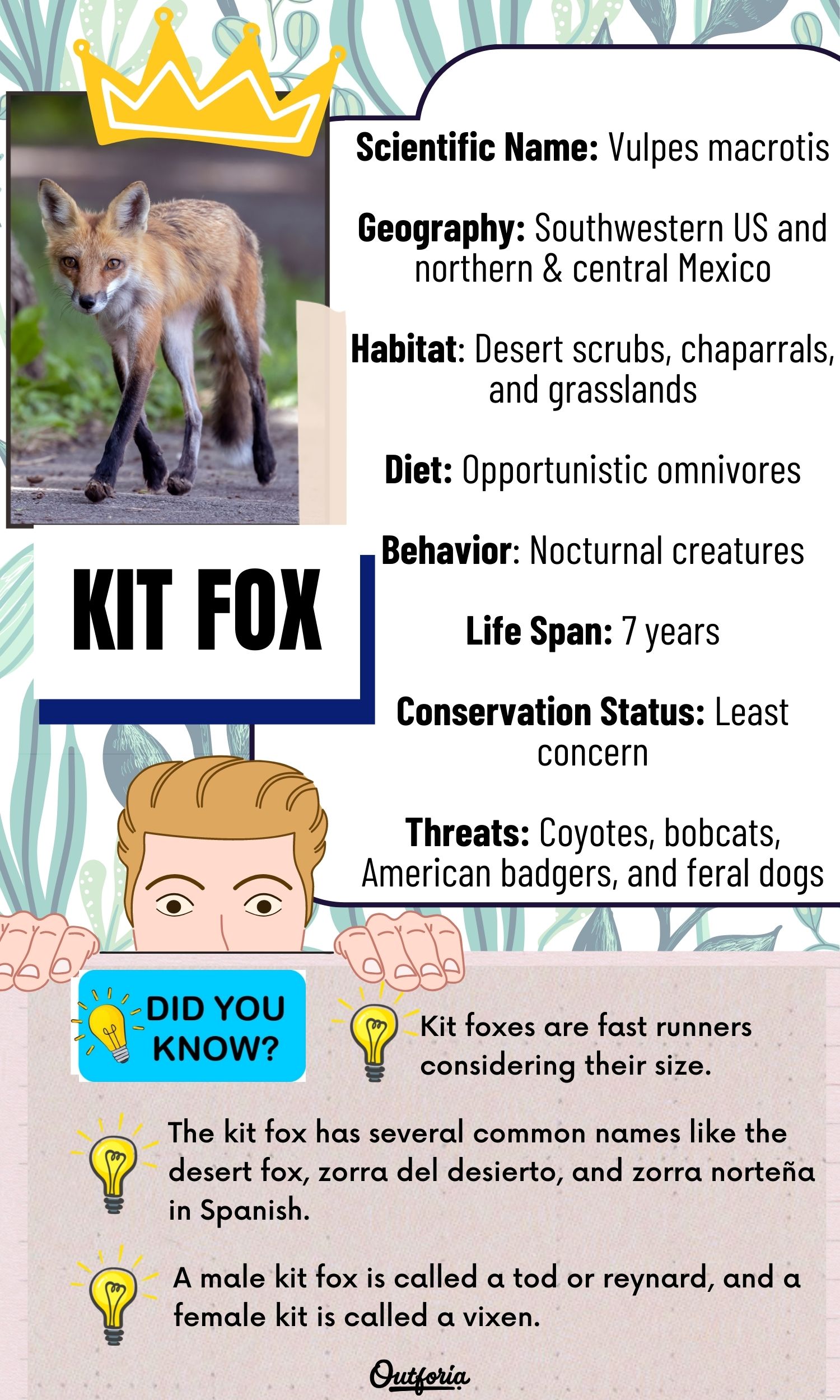
Share This Image On Your Site
Classification
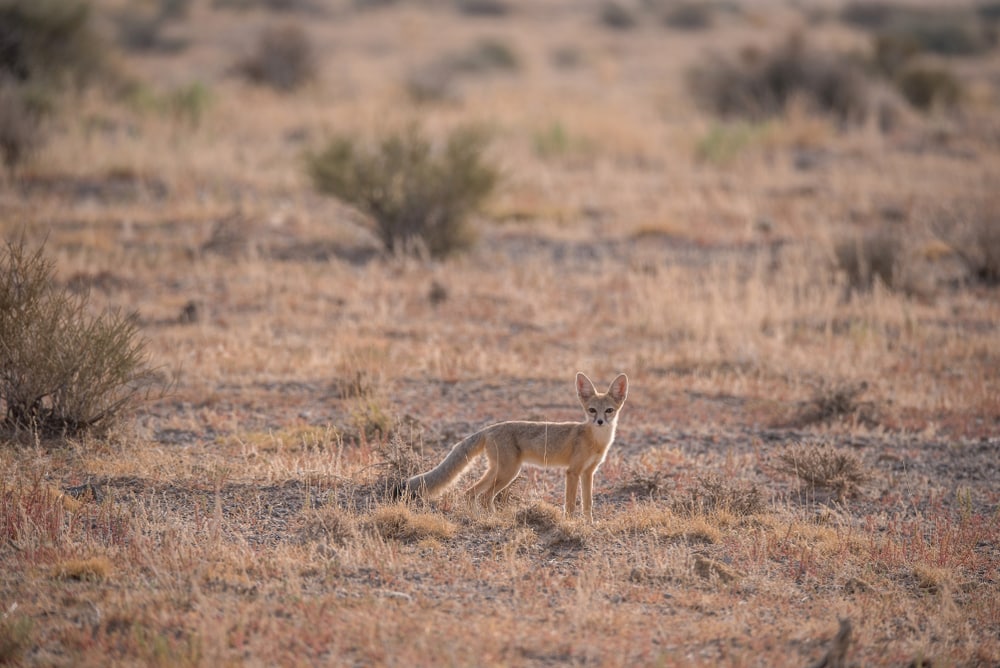
This cute little kit fox bears the scientific name Vulpes macrotis. It’s a proud member of the Canidae family of the Vulpes genus. Initially, scientists believed that the kit fox was the same as the swift fox. However, molecular systematics showed they were different.
So far, eight subspecies have been recognized. Still, scientists require further studies to analyze them. The most known subspecies is the San Joaquin kit fox (Vulpes macrotis mutica). This species is most common in San Joaquin valley.
This subspecies is currently endangered due to habitat loss from industrialization. There were less than 7,000 kit foxes in 1990. Unfortunately, their numbers continue to decline today.
You May Also Like: Spotting Bears In Arizona: What To Expect
Appearance and Size

The kit fox is the smallest member of the Canidae family living in North America, weighing up to 6 lb (2.7 kg). It has long ears, up to 3.7 inches (95 mm), so they can hear better. Its height is an average of 12 inches (30 cm) at the shoulder, comparable to the size of a cat.
You can differentiate them from other foxes by the distinct dark patches on their noses. Usually, males are slightly bigger than females. However, this difference isn’t very noticeable to untrained eyes.
The kit fox’s coat is generally gray with a black tail. Depending on the geographical distribution, the coat can have slight variations. During summer, they have brown fur, which becomes silver-gray in the winter.
In semi-arid areas, kit foxes have several adaptations to thrive under harsh conditions.
These desert mammals have tufts on the sole of their legs. These tufts protect their bodies from extreme temperatures. With upgraded paws, kit foxes can easily walk on loose sandy surfaces. Their eyes are round and big to absorb more light for better vision at night.
What’s the Difference Between a Kit Fox and a Fennec Fox?

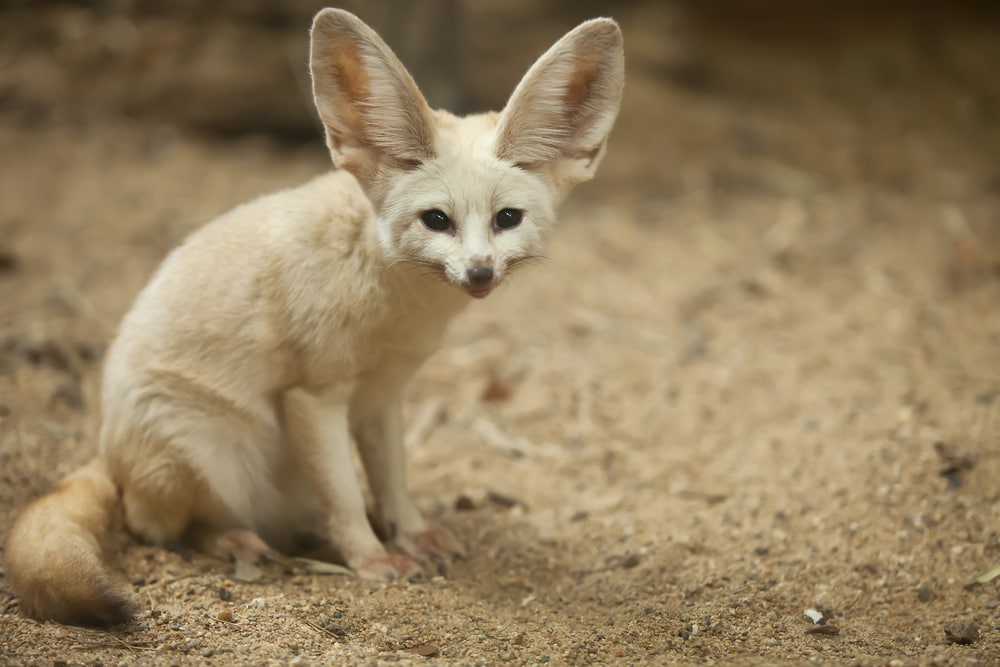
The main difference lies in the areas they inhabit. The fennec fox is native to North Africa. You can find them living in places like the western Saharan and the Sinai Peninsula.
Kit foxes are a bit bigger than their African counterparts. Compared to kit foxes, the fennec fox is the smallest canid. The fennec fox also has more prominent ears, measuring an average of 6 inches (152mm).
Geography and Distribution

Kit foxes live in the southwestern US and northern & central Mexico. Their range includes the northern part of arid Oregon and the eastern limit of Colorado. You can also spot them in Nevada, Utah, California, Arizona, and Mexico.
Habitat and Climate
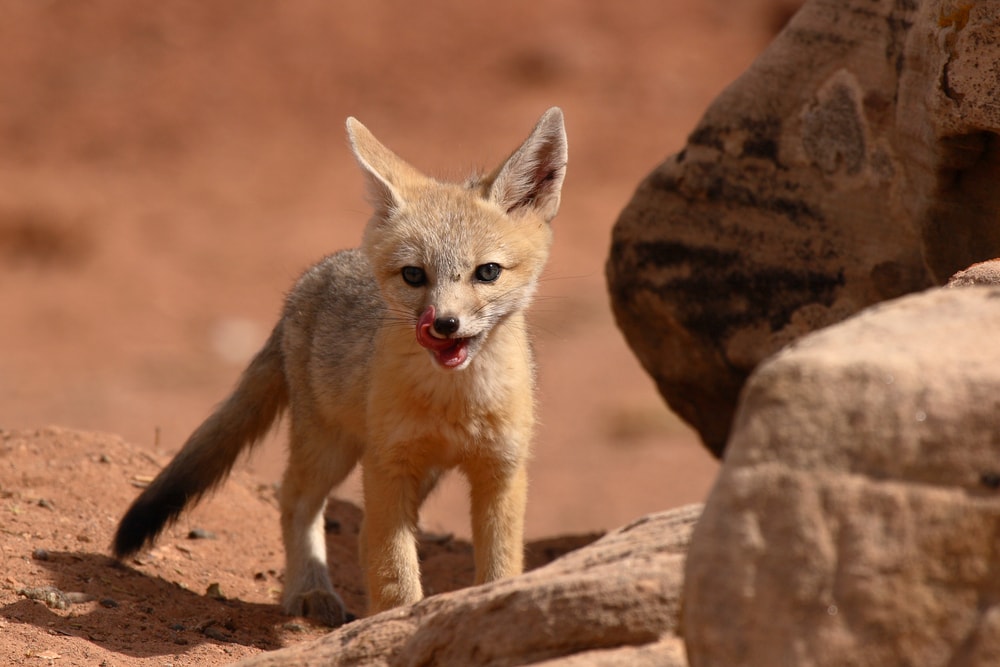
Their ideal habitats have hot climates. They like to live in arid and semi-arid regions. This includes desert scrubs, chaparrals, and grasslands.
Living in loose-textured soils means they can easily dig their dens. Due to habitat loss, you can also spot them in agricultural areas like orchards and even in urban areas.
You May Also Like: 10 Fascinating Desert Birds And Their Unique Adaptations
Diet
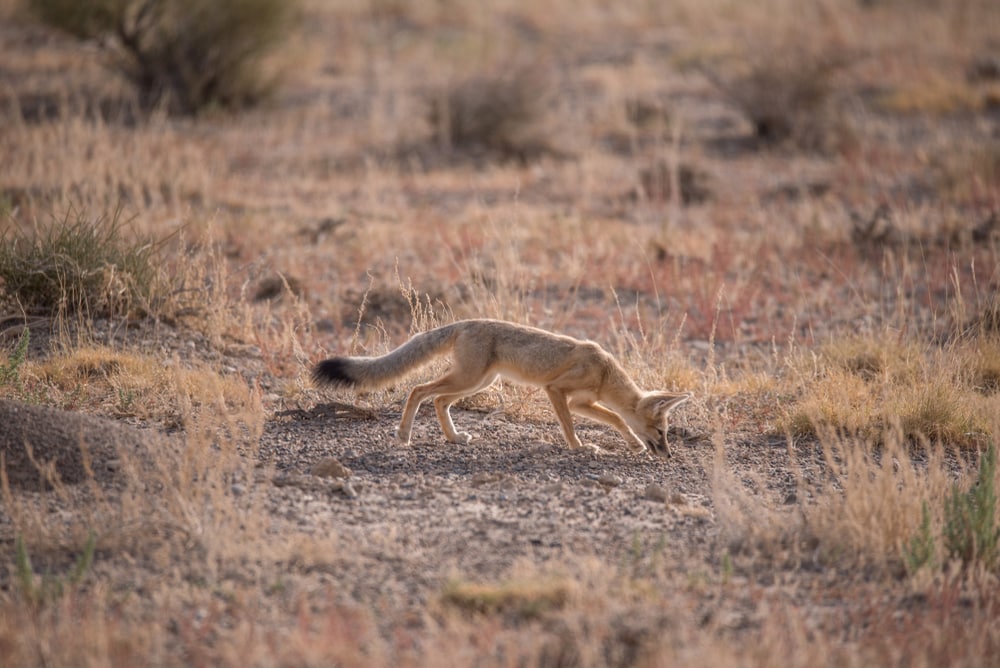
Like most of the canid family, they are opportunistic omnivores. But they’re primarily carnivores depending on the abundance of food.
For example, kit foxes in the Californian desert eat Merriam’s kangaroo rats. With their ears, they can easily hunt for kangaroo rats moving in underground burrows.
They also go for other rodents, insects, rabbits, and reptiles. When food is scarce, they can eat tomatoes and other fruits.
Many kit fox families live in the same hunting perimeter, but they rarely hunt at the same time.
They have padded fur on their feet and even between their toes. This makes them look like they were floating on the sand. Luckily, this also makes them very silent, which is perfect for ambushing prey.
Their hunting style includes searching, following intricate paths, and circling possible prey areas. They also go from one clump of vegetation to another. When they spot smaller prey, they pounce on it while silently approaching a bigger target.
These tiny foxes rarely need to drink water because they get it from their prey. However, for a full stomach, they usually need to eat 6 ounces (170 g) of prey per night.
Behavior

Kit foxes are nocturnal creatures, meaning they hunt at night time. During the day, they stay in their dens to escape the scorching heat. They use the caves for resting and caring for their litter of pups. It’s also used for running from predators and preserving water.
Most of the time, they dig their dens. Still, they can occasionally occupy badger burrows and squirrel grounds. Holes made by kangaroo rats and prairie dogs are also within their options.
They usually make dens all around their home range and can occupy up to 11 homes in one year. That’s a lot of homes for such a little fox!
Their dens have multiple entrances and exits. They use this strategy to escape coyotes and flee safely. These long tunnels can be between 9 to 18 feet long (3 to 6 m) underground.
These foxes live in small families for the breeding season or when they need to take care of pups.
They aren’t territorial, but they like their private hunting space. They usually look for other places to hunt if they see another fox. Because they’re non-migratory, they stay near their dens all year round.
Kits have excellent hearing. Sometimes, they can bark or make a hacking growl sound at possible threats.
You may also like: 22 Animals That Live In The Desert: How Do They Adapt?
Mating and Reproduction
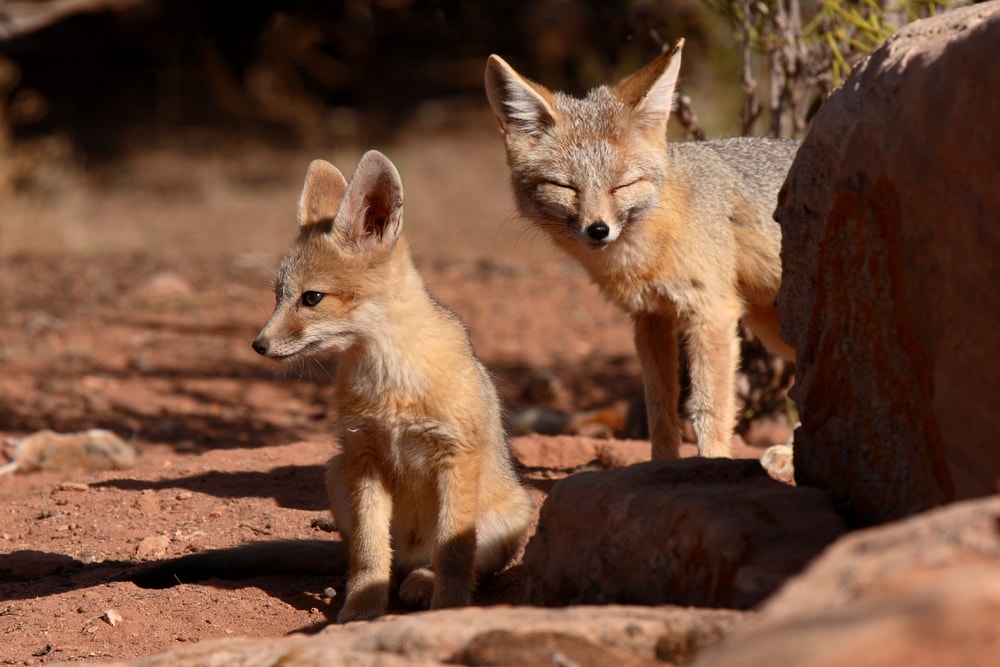
Kit foxes are socially monogamous. This means that once they mate, the pair usually stays together throughout the year.
Starting from September, female foxes look for dens for their kits. The chosen caves are cleaned, and new entries or exits are added if necessary.
They decide on a mating pair from October to November and begin mating from December to February. Gestation can last up to 55 days, and litters are born between March and May. One litter typically contains an average of four kits.
Newborn foxes don’t leave the den until they are four weeks old. When they get older, they go outside to bask in the sun and play. Both parents take care of the kits, which become independent at six months old.
The male is the sole provider of food during this period. Once the kits are three months old, they can join their parents on hunts. Sadly, most pups don’t survive their first year, with a mortality rate of 74%.
Growth and Lifespan

In the wild, kit foxes can live up to seven years. However, survival and mortality can vary based on predator activity and food scarcity.
They usually last twelve years in captivity. But this is mainly because threats and predators get eliminated.
You may also like: What Sound Does A Fox Make? It’s Definitely Not What You Expect!
Population & Conservation Status
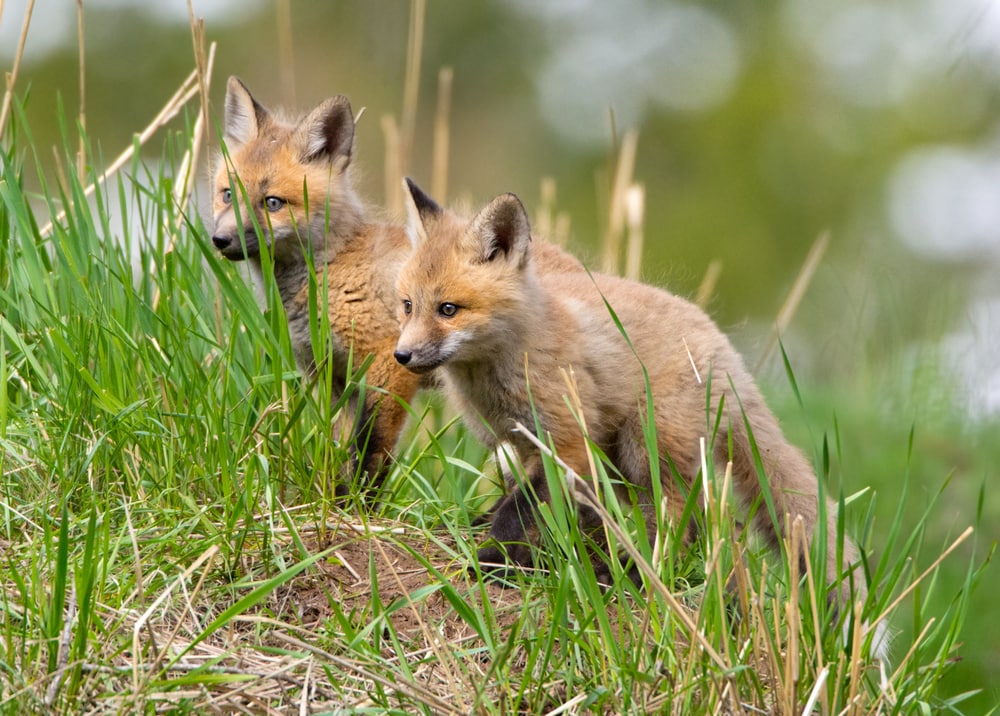
The total population number is unknown, as IUCN lists the kit fox as least concern. However, the San Joaquin kit fox subspecies is endangered. In 2007, Wildlands Inc. announced the creation of 277 hectares (684 acres) to protect the habitat of this species.
Threats and Predators
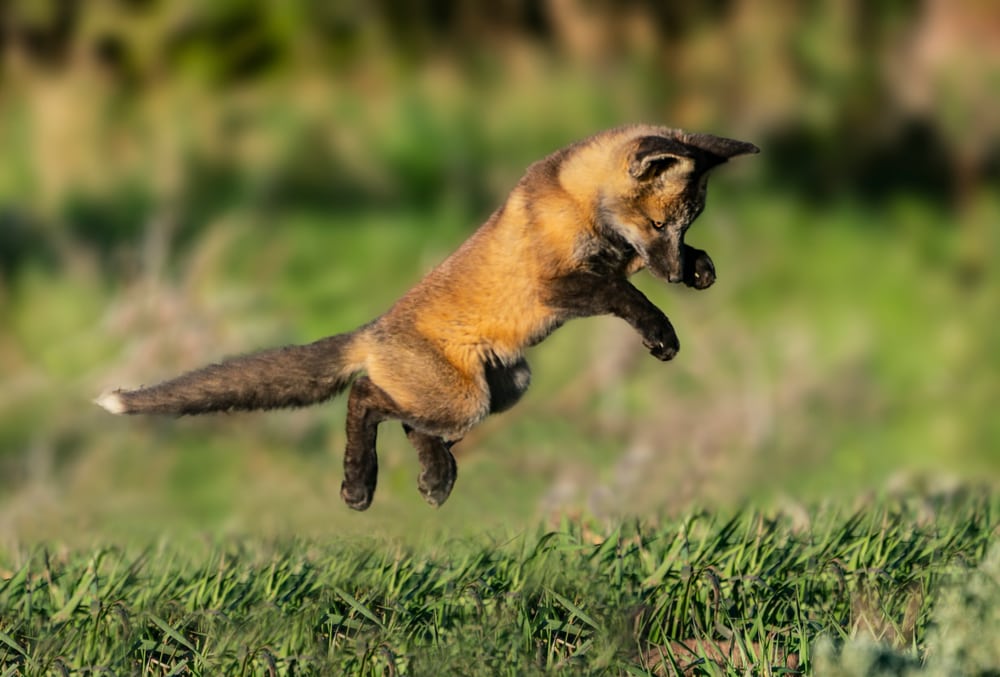
Their predators include coyotes, bobcats, American badgers, and feral dogs. Another species of fox, the red ones, also prey on kit foxes.
Their major threats are human interactions as they get hunted for sport and fur. Unfortunately, they also get into car accidents. Sometimes, off-road vehicles destroy their dens and everybody in them, including the pups.
Another major threat is habitat loss. Over industrialization, with new highways and buildings, reduces their habitat perimeter.
You May Also Like: Apex Predator List: The Top 12 Predators At The Top Of The Food Chain
Ecological Role
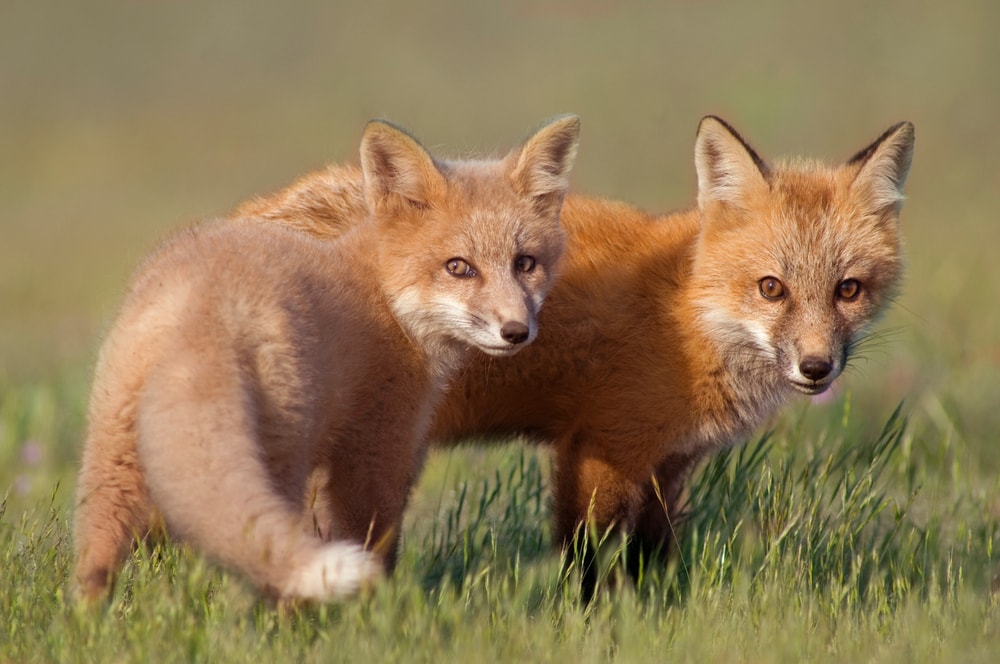
Since they’re predators, they have an essential role in the ecosystem. They keep the population of small mammals, insects, and birds in check. They also provide homes for other animals. As they move from den to den, other species take their unoccupied homes.
Kit foxes are also prey, so they provide sustenance for bigger animals. They can also scavenge, which means they help with biodegradation.
Fun Facts

The kit fox has several common names like the desert fox, zorra del desierto, and zorra norteña in Spanish.
Kit foxes are fast runners considering their size. They can reach up to 25 mph (40kph), which is helpful when hunting or running from predators.
A male kit fox is called a tod or reynard, and a female kit is called a vixen. Baby kits are called pubs, cubs, or kits.
FAQ

What is the difference between a kit fox and a gray fox?
The main difference between them is the look of their tails. The gray fox has black stripes like a crest along the top of the tail.
What are kit foxes known for?
The kit foxes are known for their peculiar appearance, petite bodies, and long ears.
Do foxes eat cats?
It is rare for a fox to eat a cat. However, they sometimes attack kittens or old and sick cats that they consider easy prey.
Can a fox breed with a dog?
A fox cannot breed with a dog because they are not compatible. It is because they have different DNA and chromosome numbers.
Can you keep a kit fox as a pet?
Kit foxes can be adorable, but it’s illegal in California and Oregon to keep them as pets. Their ideal homes are underground dens, not cages.









